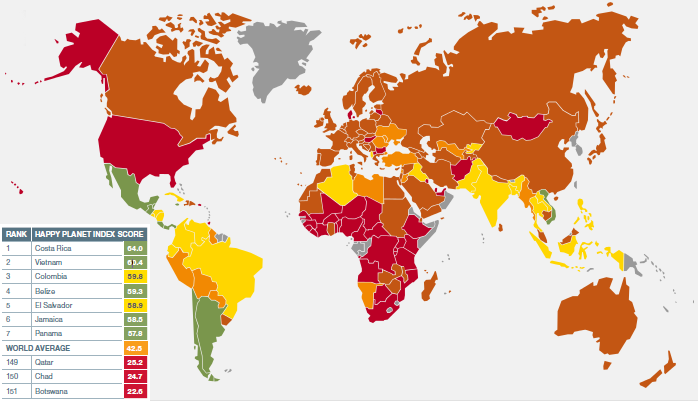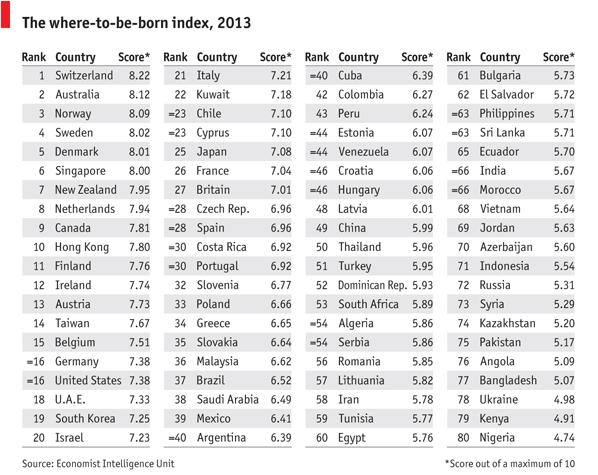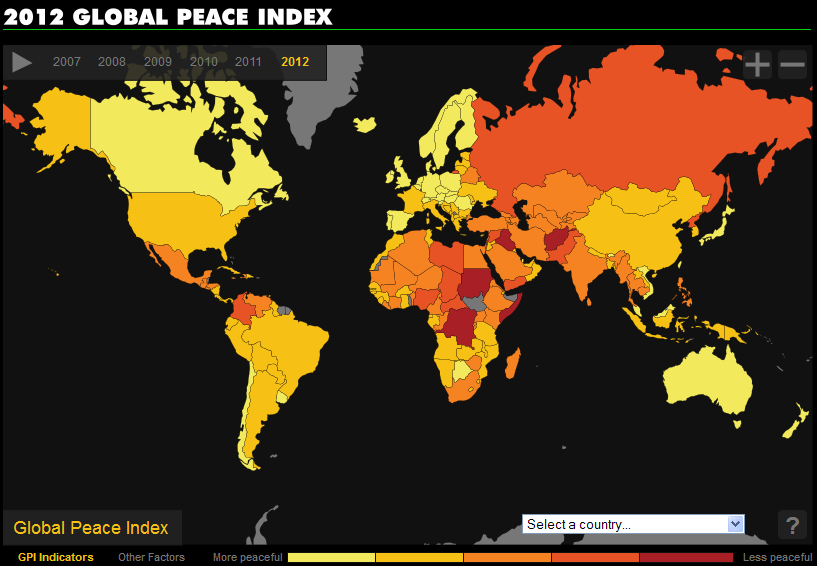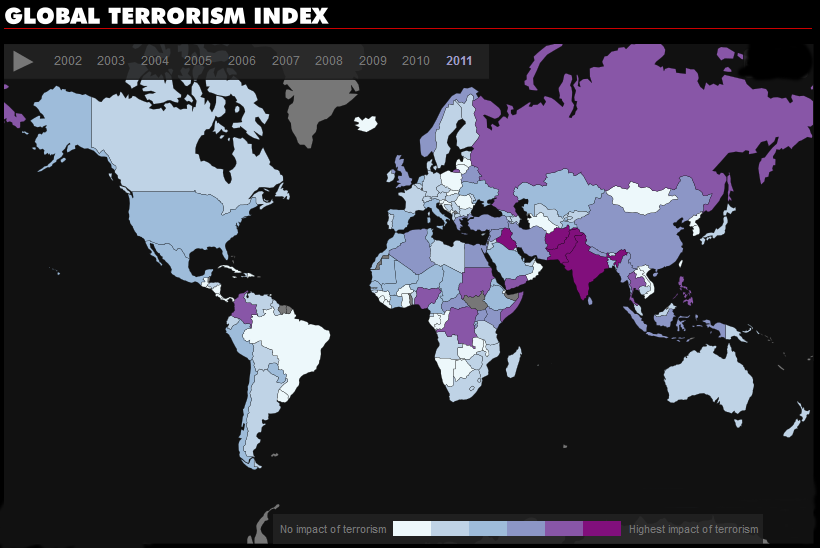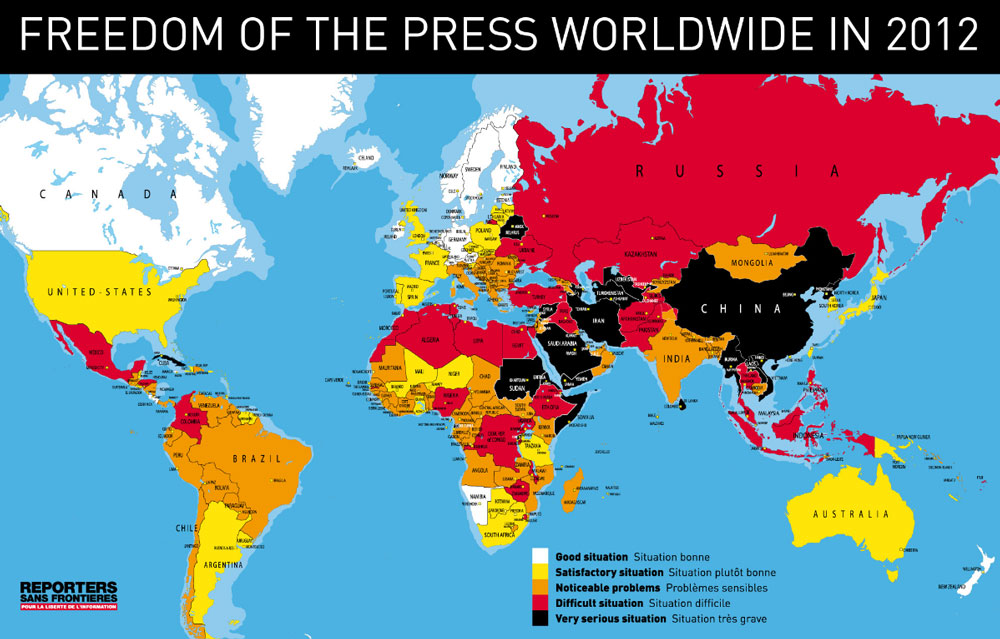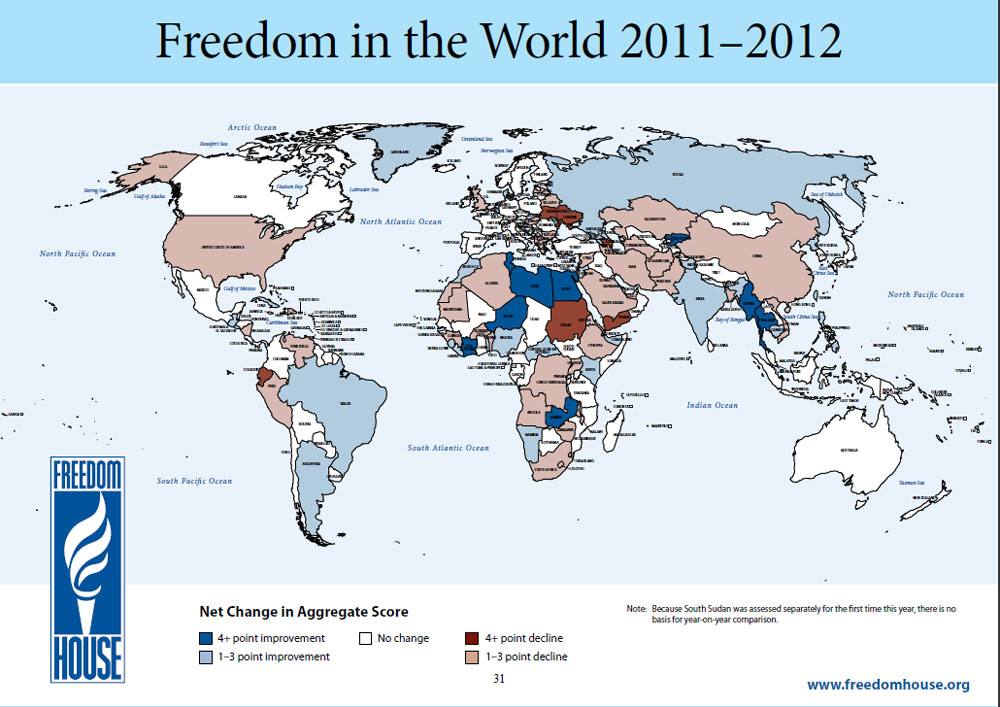The Happy Planet Index (HPI) measures how countries provide their citizens with a long and happy existence within their borders.
The HPI measures three variables: experienced well-being, life expectancy and environmental footprint. Environmental footprint is a measure of resource consumption. Scores for each variable are combined to create an overall measurement, where the color green represents the best performance for all three variables. The HPI has been calculated for 151 countries.
The highest ranking countries on the HPI are: Costa Rica, Vietnam, Belize, Colombia and El Salvador. See table below:
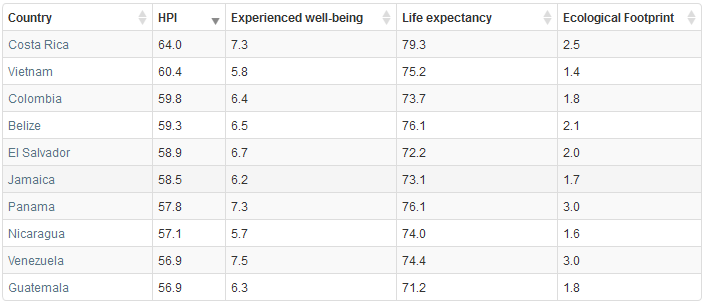 For more information about the HPI methodology, definitions and the complete list of ranked countries, please visit: The Happy Planet Index
For more information about the HPI methodology, definitions and the complete list of ranked countries, please visit: The Happy Planet Index
